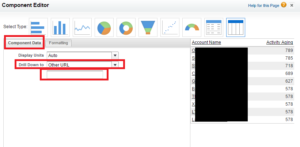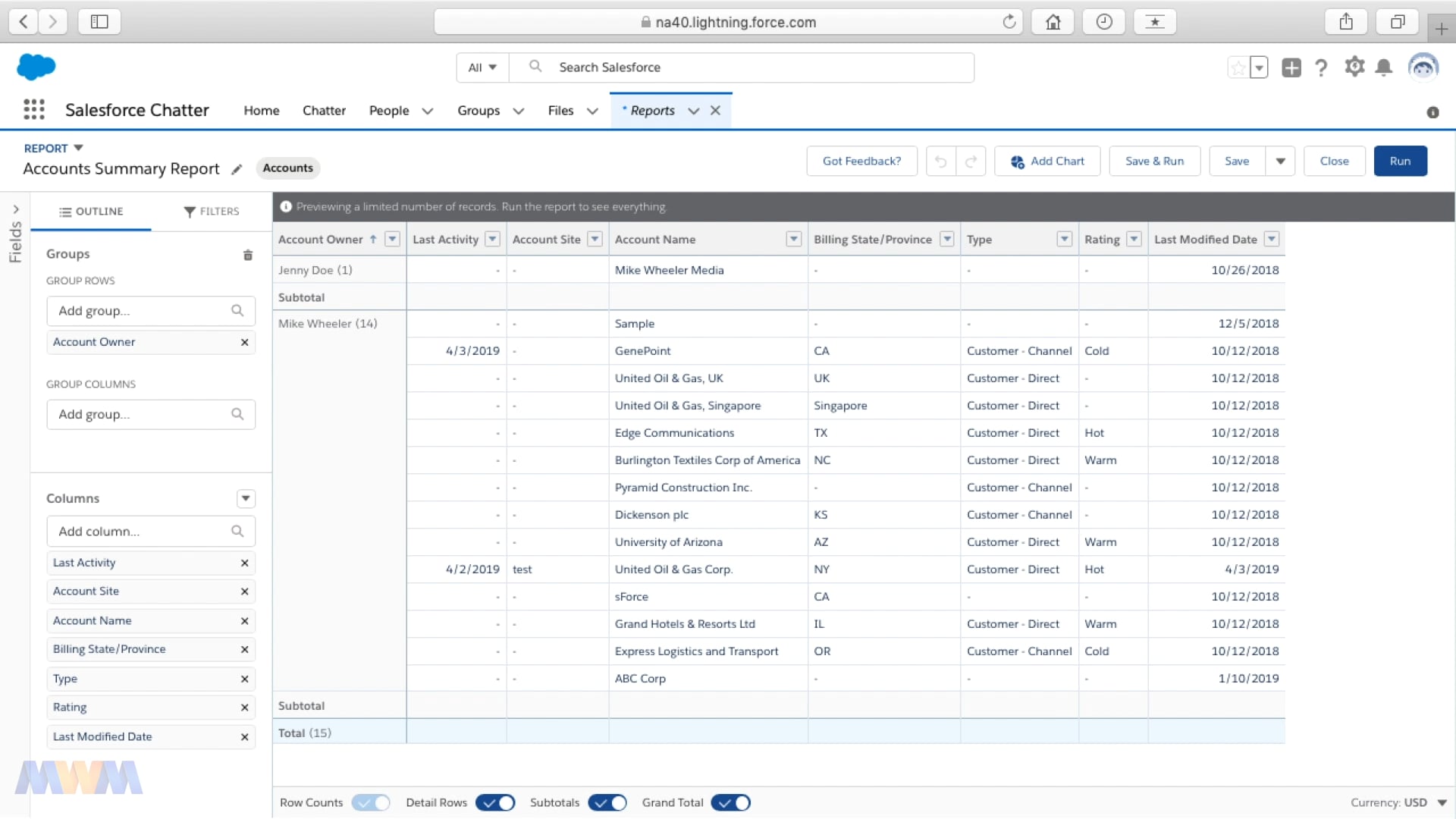
(Image credit: Salesforce) Step 6 (optional): Group rows and columns You can remove columns by hitting X next to column headers in the Outline tab or by selecting Remove Column from a column’s dropdown arrow in the report table.Įditing filters and columns makes reports more relevant to your business. Use the search bar to select additional column headers, such as Close Date, Account Type, and Contact Email. To add extra columns, go to the Outline tab-next to Filters, on the left-hand side ribbon. For instance, an Opportunities report may list account names, deal stage, and win probability. In Edit mode, your table is pre-populated with columns drawing relevant data for your report type. Apply report columns Step 5: Add or remove columns Filters will typically have a drop-down menu where you choose the value you want to filter by. Here, alter filters from the default list or use the search bar to see more options. Simply click Filters on the left-hand side ribbon. For example, you can design your Opportunities report to only include closed deals where the lead source is employee referral and amounts are over $100,000. Apply report filters Step 4: Select desired filtersįilters are categories to split your data into, making your report information relevant and concise.

You can also pick a subcategory to make your report more specific-for example, Opportunities subcategories include Opportunities with Partners and Opportunity History.Ĭlick on a subcategory, or stick to the default report type, and hit Continue. Categories like Administrative Reports may benefit HR and Operations departments in identifying high-performing staff and sales content. The report type window contains your main CRM data categories, including Accounts, Opportunities, and Campaigns, which can help your sales execs and senior management determine your sales funnel’s effectiveness. (Image credit: Salesforce) Choose report type Step 3: Select report type To create a new report, click the New Report button on the Reports toolbar, next to the search function.Ĭreate a report from scratch to have more control over your data. For example, if you’ve created a custom field in your contact records titled Company Tenure, you may want your report to focus on leads with tenure of 10+ years. While picking an existing report may save time, it’s worth creating one from scratch if you want data that’s specific to your business. If you click on All Reports, on the left-hand side ribbon, you have templates at your disposal, ranging from extensive reports on all pipeline opportunities, to reports zoning in on specific parameters, such as industry, financial year, or opportunity size. The Reports page opens with a list of recently used reports, by default. Create a new report Step 2: Create a new CRM report In this toolbar, click on the Reports tab.Īlternatively, if your homepage is populated with data visualizations, such as your overall sales pipeline, you can click the View Report hyperlink at the bottom of visual elements. On top of these elements, you have a toolbar linking to primary features, such as Leads, Accounts, and Contacts. Salesforce Sales Cloud opens with a dashboard containing your main sales figures, tasks, and opportunities. Locate Reports tab Step 1: Click Reports on the homepage toolbar Salesforce’s algorithm identifies such cases and offers duplication removal tools, both in individual contact records and through its Duplicate Rules function.

These are automatically added by Salesforce when you first create your account and may skew your results if not removed. Remove any sample accounts before you begin your report.

This ensures your reporting is current and reliable. As reports can be used to forecast upcoming sales, you should also assign expected revenue and probability figures for each opportunity in your pipeline. Next, ensure pipeline items are up to date: for example, check that opportunities have been created for accounts with an interest in your business. You can use the Import function from the Leads, Accounts, Contacts, or Opportunities tabs. Sources may include mailing lists from third-party software, sales spreadsheets, and physical business cards. Reports feed off your Salesforce CRM data, so make sure you upload all the contact data that’s relevant for your business.
#Salesforce exporting tabular reports how to
View Deal Preparation How to export data and create a report in Salesforce: Preparation


 0 kommentar(er)
0 kommentar(er)
